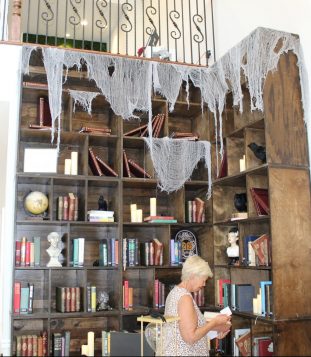The Port Jefferson Village Board of Trustees will undergo a major shakeup next week as Bruce Miller leaves the board.
Miller, who has served since 2014, was unseated in last week’s village election after an unsuccessful bid for a fifth term. His seat will be filled by Lauren Sheprow.

Photo from village website
As Miller transitions out of village government, his colleagues weighed in on his legacy of service to the village. In a series of emailed statements, Mayor Margot Garant and trustees took the opportunity to describe their many takeaways from Miller’s time in office.
The mayor, under whose administration Miller served during the entirety of his tenure as a trustee, highlighted several initiatives Miller had championed through the village government.
“Bruce’s vision for a better Port Jefferson brought us to the table on many big issues, including the repowering of our power plant, getting a better ride on the Long Island Rail Road, and reducing energy costs for those who live both in Port Jefferson and beyond,” Garant said. “He should be commended on every level for his selfless contribution, and I wish him all the best in his retirement years ahead, spending many more days visiting his daughter and doing the things he loves.”
Deputy Mayor Kathianne Snaden praised Miller for the innovative ideas and problem-solving skills that he brought to the village board. According to her, his creative approach is best illustrated by his taste in architecture.
“My first memory of Bruce was with his work on the Architectural Review Committee and his ideas on Victorian-style exterior design,” she said. “He always brought an interesting perspective to issues and it’s been a pleasure working with him. I wish him all the best in his future endeavors.”
Trustee Stan Loucks, who has also served alongside Miller for eight years, emphasized that Miller’s service to the community long predates his time as trustee.
“It should be obvious to everyone that Bruce Miller has been, and still is, dedicated to servicing the village of Port Jefferson,” Loucks said. “His many years on the school board and the eight years he served as a trustee are proof of that.” He added, “There is a saying, ‘All good things come to an end.’ I feel that Bruce was one of those good things. I wish him the best going forward — good health and happiness.”
Trustee Rebecca Kassay, who will remain on the board for another term, also acknowledged Miller’s contributions to the school district. She added that she hopes to continue to tap into Miller’s wealth of experience moving forward.
“Trustee Miller has garnered invaluable institutional knowledge from his years of service, not only on the Board of Trustees, but also from his years on the board of education,” she said. “I appreciate his perspectives and look forward to continuing a dialogue with him to help inform future village decisions.”
Sheprow commented on the lessons she takes away from her predecessor’s decades of public service in and around the village.
“Bruce Miller has been contributing time and talent to the Village of Port Jefferson — and before that to the Port Jefferson School District — for close to two decades,” the trustee-elect said, adding, “He deserves a great deal of respect for all he has contributed and I applaud him for his dedication. He is a role model for public service to be emulated in the Village of Port Jefferson and I hope others will follow in his footsteps and get involved as he has for the betterment of this community.”
Sheprow will be seated officially after a formal swearing-in ceremony held on Monday, July 4, at Village Hall. This will conclude Miller’s eight-year tenure on the village board.
To read about Miller’s biggest takeaway from his time in office, see the TBR News Media June 30 story, “A legacy of service: Bruce Miller reflects upon his tenure as Port Jeff Village trustee.”


























